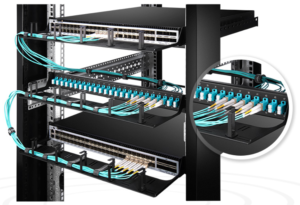Structured wiring is the standard for integrating home technologies and has emerged as a cornerstone of the smart home movement. It’s easier to plan and install, easier to maintain, and helps future-proof a home.

It’s also easier to sell a home when it’s wired correctly. The more you can do to wire a home during construction, the less work will be needed in retrofitting it later on.
It’s easier to plan and install structured wiring than other wiring techniques. This makes it a great option for home builders and businesses that are in the process of planning a new build. It’s also a great choice for existing buildings that are looking to upgrade their networking system.
Unlike point-to-point wiring, structured cabling includes divisions and shorter lengths that make it much easier to organize. This allows network technicians to easily navigate the wires and determine which ones are connecting devices to the network.
This also helps them identify potential issues with the network and quickly find solutions. It makes the system easier to maintain, as well. This is important for businesses that have large numbers of employees and a high volume of clients.
A messy wiring system can be unappealing to both staff and customers. A tangle of ethernet cables, phone cords, and fiber cables can get in the way of business operations.
In addition, a disorganized wiring system can be hard to keep up with when there are repairs or updates needed. This can lead to costly downtime.
Structured wiring is easier to plan and install because it anticipates the needs of businesses. It makes it easier for businesses to move equipment around or add components without having to rewire their entire infrastructure.
This saves time and money and helps ensure that a company can get the most out of its investments in technology. It also keeps the system scalable as the company grows and changes its needs.
When the company upgrades to a different vendor or model, structured wiring can support the new system and hardware. This prevents the need to rewire the entire system when the company is ready to upgrade its communications technology.
Lastly, structured wiring is easy to repair and replace when something goes wrong. This is crucial in situations where there is a lack of power, or the wiring is broken.
Whether you’re in need of new structured wiring for your business or want to upgrade the system you currently have, it’s important to choose the right company. A professional firm has the experience and knowledge to do the job right. They can project manage the installation and meet any deadlines you have.
Whether you’re building a new home, remodeling an existing one, or putting in a commercial building, structured wiring is an important part of the project. When it’s done properly, structured wiring can have a major impact on your resale value and the comfort of your family.
The first step in installing structured wiring is to decide what systems need to be connected and how they interact. The goal is to design a system that works best for the current and future needs of your business or building.
A structured wiring plan is a critical component of any business or commercial building because it ensures that all of the equipment and technology you have is working together properly. This way, you can use the most efficient technology to keep your business running smoothly and efficiently.
Structured wiring involves connecting devices, such as computers, TVs, phones, and alarm systems, to a central hub. The central hub called a Home Connection Center (HCC), organizes all of the wires that support these devices and keeps them out of sight but still accessible.
Another benefit of a well-organized network is that it makes it easier to manage, update and troubleshoot your system. You can easily identify which wires are connected to which device so that you can quickly fix any problems.
Using a structured wiring system also makes it easier to add more devices to your network in the future. This makes your system more scalable and allows you to connect more devices directly to the high-bandwidth cabling, such as fiber optic cable.